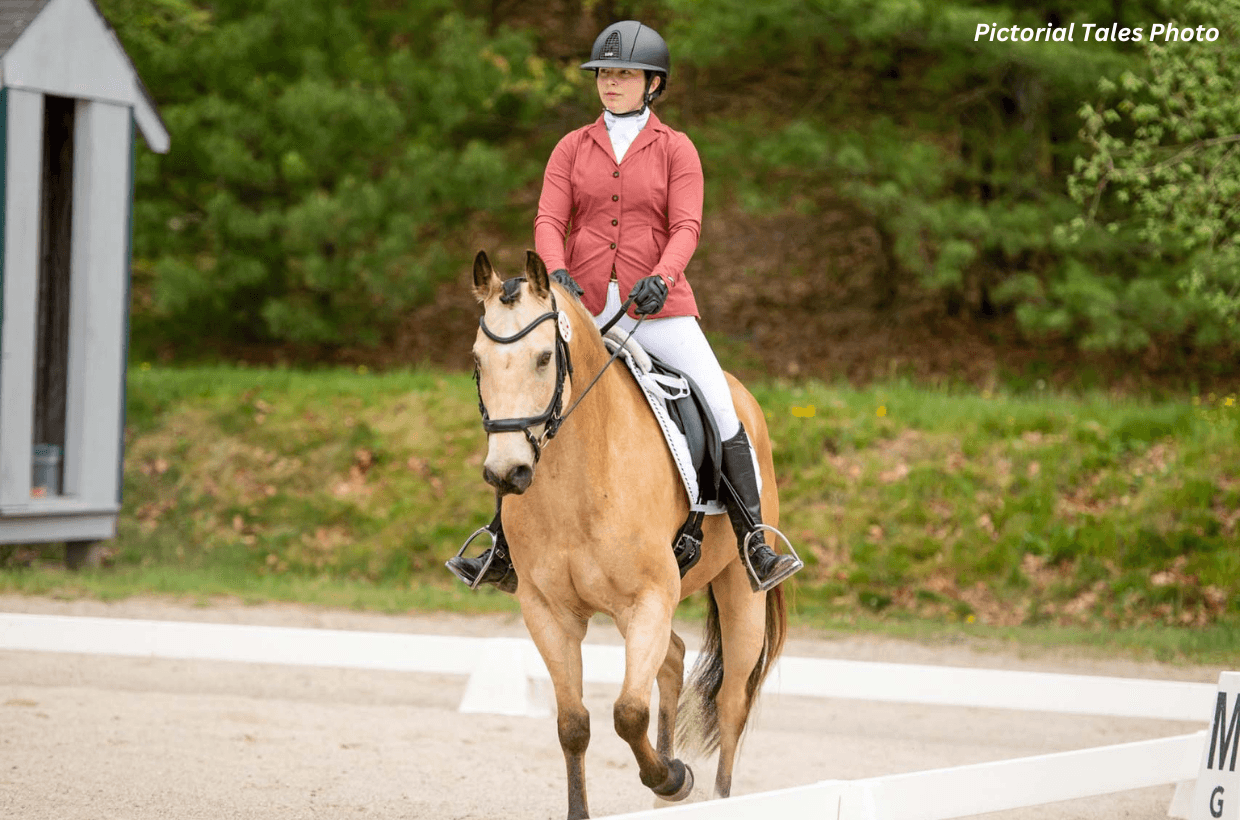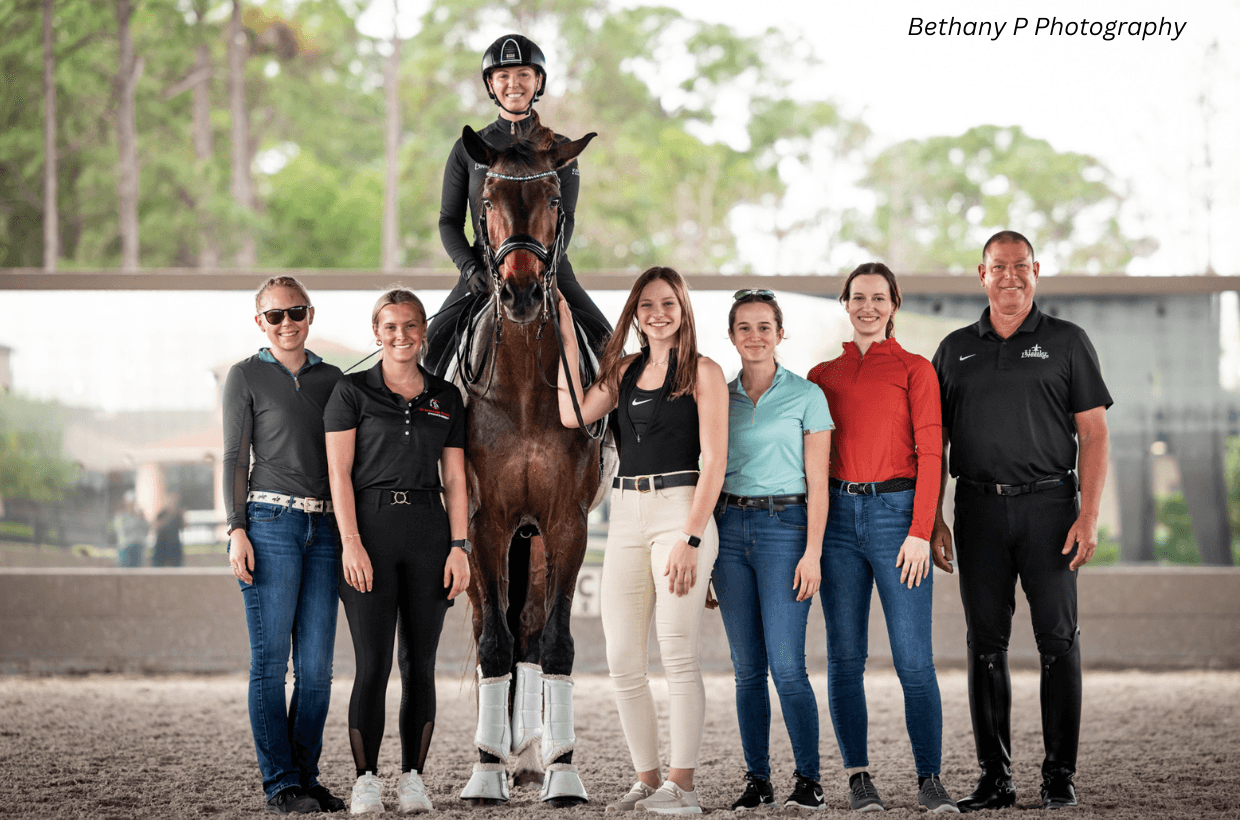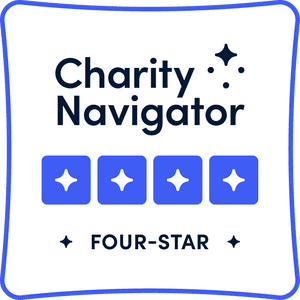2022 Major Anders Lindgren Instructor Grant Recipient: Lori Barrett (UT)
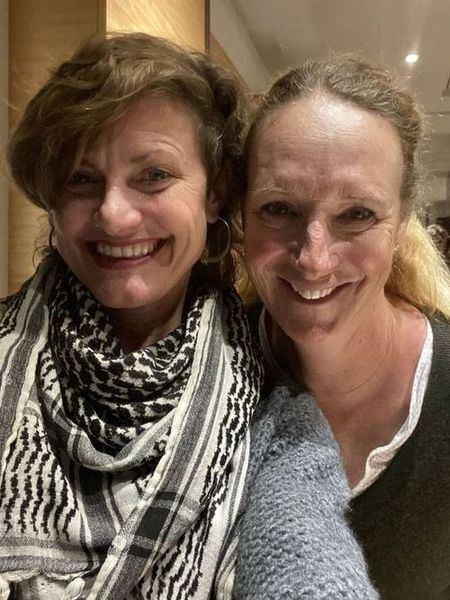
Lori and Sabine
CALIFORNIA DREAMING
We are incredibly grateful to TDF for the Major Lindgren Instructors’ Grant, which allowed us to take three horses to work with our longtime friend and coach, Sabine Schut-Kery in San Marcos, CA. I brought two of my mares, a Fourth Level UB40/Idocus and a coming-six-year-old Young Horse candidate by Finest, out of a Sandro Hit/Rotspon mare. Also joining me on the journey was the 10-year-old Lusitano gelding owned by Livette Gonzalez, competing at Prix St. Georges, schooling all beyond.
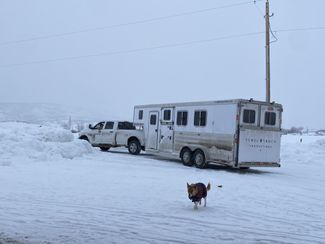
Leaving the 12 feet of snow piled on the north side of our indoor arena near Park City, Utah, on the first of the year made our arrival at Monica Garner’s gorgeous Palms Equestrian Center a special treat. Beautiful grass pastures (year round!) greeted me, and meticulously groomed dressage courts stood waiting for hoofprints. The staff was friendly and absolutely on-point. The horses settled in quickly and our 2023 dressage intensive stage was set.
Having a training barn in the dressage desert of Utah makes it an ongoing challenge to maintain the highest standards of our difficult sport. We host incredible clinicians, but the opportunity to immerse me in international-caliber dressage for several weeks was illuminating and inspiring. The hardest part was leaving! Focusing on excellence without compromise always leaves me wanting more of the same.
THE MESSAGE
Spoiler alert, for every horse I rode, do you know what we focused on? The basic work within the movements. So if you’re not looking for a secret message with a shortcut to the Olympics, by all means, read on.
If I could distill dozens of hours of lessons into one simple theme, it would be the importance of bend. Fendi, my young mare, tends to get so gummy and elastic that it’s tempting to chase her hind legs. Increased bend allowed me to better engage her hind legs without going to the hand. My Fourth Level mare, Emeres, tends to be tight in her body, so the challenge with her is creating the elasticity to get top scores. Increased ribcage bend helps her to swing more in her gaits, creating buoyancy within the movements. Valentino, the Lusitano, wants to run off his hind legs, dumping into the hand. Demanding more bend in his body redirects that energy, keeping him more balanced on his hind legs and therefore less reliant on the hand for balance.
Of course, we worked on everything from tons of pirouette work to improving the expression in the changes and increasing cadence in the half pass, but that BEND message was the theme that carried through for each of those pieces. Self-carriage gets an honorable mention, as we increased the thrust in my horses’ canters, (all basically) remembering to always ride with a supple hand, releasing the rein, and teaching them to carry themselves with the increased push behind.
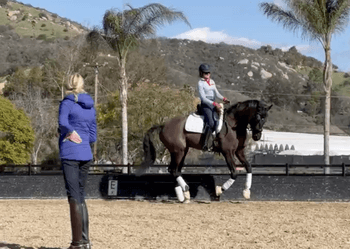
THE TAKEAWAYS
The message of the importance of ribcage bend is coming to Utah! My students will further focus on their inside bending aids, learning how to get horses’ ribcages to lift gently off of a friendly inside leg. My training horses will improve in engagement and elasticity, as I’m able to incorporate this into all of our work. Lastly, our goal of staying true to the tenets of classical dressage while working in the competitive sport was fully supported by Sabine’s incredible eye and sharing of her vision.
Watching world-class riders work, then receiving coaching from the same, is a reminder to always to stay true to the principles of dressage. It can be tempting to be a mouse chasing the cheese, going after achievement in sport, and losing focus on the qualities of suppleness and rideability. The work we did in California served to reiterate that harmony and suppleness can be brilliant when channeled with engagement & self-carriage.

